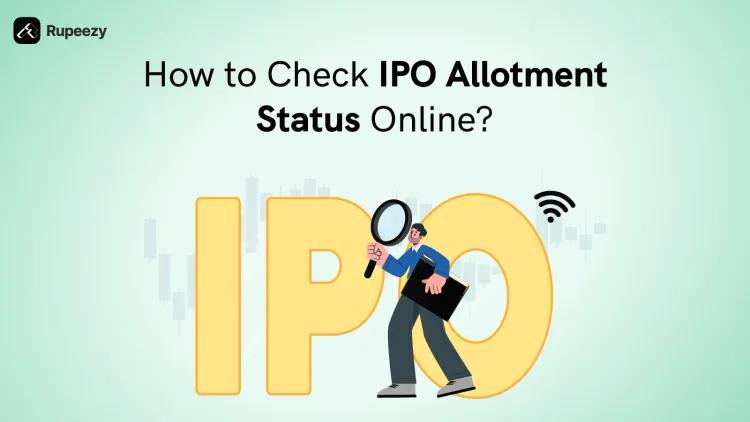Exploring the Book Building Process in IPOs: Key Players, Pros, Cons, and FAQs


00:00 / 00:00
Introduction
Imagine you’re a business owner, and you’ve been working tirelessly to grow your business over the years. You’ve been able to attract investors, but now you’re ready to take your company public.
However, the process of going public can be complicated and daunting. That’s where the IPO Book Building Process comes in.
It’s a method used to determine the price at which new shares will be offered to the public. In this article, we’ll explore what is book building process, how it works, and its advantages and disadvantages.

Stages of the IPO Book Building Process
The Book Building Process IPO involves several stages, each of which plays an important role in determining the final issue price and ensuring the success of the IPO. Let’s take a closer look at each stage:
Pre-Issue Planning
During this stage, the company and its investment bankers work together to identify the target investors and determine the size of the offering.
The investment bankers also conduct due diligence to ensure that the company is compliant with regulations. The key activities in this stage include:
Identifying target investors: The investment bankers work with the company to identify potential investors who may be interested in the IPO. They also determine the size of the offering based on the demand from these investors.
Conducting due diligence: The investment bankers review the company’s financial statements, business operations, and legal compliance to ensure that everything is in order for the IPO.
Let’s say a company is planning to go public through an IPO. The investment bankers work with the company to identify potential investors, such as institutional investors, retail investors, and high net worth individuals.
They also determine the size of the offering based on the demand from these investors.
The investment bankers review the company’s financial statements, business operations, and legal compliance to ensure that everything is in order for the IPO.
Marketing and Demand Generation
Once the offering size and target investors are identified, the investment bankers start marketing the IPO to potential investors.
They also conduct roadshows and investor meetings to generate demand for the shares. The key activities in this stage include:
Marketing the IPO: The investment bankers create marketing materials, such as a prospectus, and use various channels to promote the IPO to potential investors.
Conducting roadshows: The investment bankers travel to different cities to meet with potential investors and generate interest in the IPO.
Example: The investment bankers create a prospectus that contains information about the company’s business operations, financials, and the terms of the IPO.
They use various channels, such as social media, print media, and television, to promote the IPO to potential investors.
They also conduct roadshows in different cities to meet with potential investors and generate interest in the IPO.
Book Building
Companies can decide the IPO pricing in two ways. Fixed price issue and book building. As the name suggested. In fixed price issue the IPO issue price is fixed or pre-decided by the company.
On the other hand, book building follows a price discovery mechanism wherein the price is determined based on demand from investors.
Bid Price Band: The issuer of the IPO opens a price range for bidding. The lower price range of the bid is the floor price and higher range is the maximum or ceiling bid price.
Investors bid for a price equal to or above the floor price and equal to lor lower than ceiling price, along with the quantity of shares.
Collecting Bids: During this stage, the investment bankers collect bids from potential investors. The bids indicate the number of shares investors are willing to buy at various prices.
The investment bankers then use this information to determine the final issue price.
The investment bankers collect bids from potential investors, which indicate the number of shares they are willing to buy and the price they are willing to pay.
Price Discovery: Once the bidding date is over, the underwriter arrives at the final issue price on the basis of demand from investors.
The total demand and weighted average calculation is used to finalise the issue price, also known as cut-off price.
Example: The investment bankers collect bids from potential investors, which indicate the number of shares they are willing to buy and the price they are willing to pay.
For instance, an institutional investor may submit a bid for 10,000 shares at Rs. 500 per share, while a retail investor may bid for 100 shares at Rs. 550 per share (price band of Rs 500 to Rs 550).
The investment bankers analyze the bids to determine the demand for the shares and the price at which they will be alloted.
Allocation and Listing
Finally, the shares are allocated to investors, and the company is listed on the stock exchange. The key activities in this stage include:
Allocating shares: The investment bankers allocate shares to investors based on their bids and the final issue price.
Listing on the stock exchange: The company’s shares are listed on the stock exchange, and trading begins.
Who are the Key Players in the IPO Book Building Process?
The IPO Book Building Process involves several key players who work together to ensure the success of the IPO. These players include:
Company
The company that wants to go public is a key player in the IPO Book Building Process. The company’s management team works with the investment bankers to determine the offering size, set the issue price, and identify the target investors.
Investment Bankers
The investment bankers are another key player in the IPO Book Building Process. They help the company to go public by providing a range of services, including financial and legal advice, due diligence, and marketing.
Book Runners
The Book Runners are responsible for managing the book of orders during the book-building process. They collect bids from potential investors and use this information to determine the final issue price.
Underwriters
The underwriters are responsible for ensuring that the IPO is successful. They purchase the shares from the company and sell them to investors. They also manage the risks associated with the IPO.
Stock Exchanges
The stock exchanges are where the shares of the company are listed for trading. They provide a platform for investors to buy and sell the shares.
Let’s say a company is planning to go public through an IPO. The company’s management team works with the investment bankers to determine the offering size, set the issue price, and identify the target investors.
The investment bankers provide a range of services, including financial and legal advice, due diligence, and marketing.
The book runners manage the book of orders during the book-building process, and the underwriters purchase the shares from the company and sell them to investors.
The stock exchanges provide a platform for investors to buy and sell the shares.
Advantages of IPO Book Building Process
Transparency
The IPO Book Building Process ensures transparency in the pricing of shares. The book runners collect bids from investors and use this information to determine the final issue price.
This process is open to all investors, and it helps to ensure that the shares are priced fairly.
Efficient Pricing
The IPO Book Building Process helps to determine the most efficient price for the shares. The book runners use the bids from investors to determine the demand for the shares and set the final issue price accordingly.
This helps to ensure that the shares are priced correctly and that the company can raise the required capital.
Flexibility
The IPO Book Building Process offers flexibility to companies. They can choose the type of investors they want to target, set the issue price, and determine the offering size.
This allows companies to tailor their IPO to meet their specific needs and objectives.
Wide Investor Base
The IPO Book Building Process allows companies to reach a wider investor base.
The book runners can collect bids from a large number of investors, including institutional investors, retail investors, and high net worth individuals.
This helps to ensure that the IPO is successful and that the company can raise the required capital.
Let’s say a company is planning to go public through an IPO. The book building process ensures transparency in the pricing of shares.
The book runners collect bids from investors and use this information to determine the final issue price, which helps to ensure that the shares are priced fairly.
The process also allows companies to tailor their IPO to meet their specific needs and objectives, and it helps to ensure that they can reach a wider investor base.
Disadvantages of IPO Book Building Process
High Cost
The IPO Book Building Process is a complex and expensive process. Companies need to pay fees to the investment bankers, book runners, and underwriters, which can add up to a significant amount.
Time-Consuming
The IPO Book Building Process is a time-consuming process that can take several months to complete. Companies need to go through a series of regulatory and compliance requirements, which can delay the IPO.
Volatility
The IPO Book Building Process can be volatile, and the final issue price may not reflect the actual market price of the shares. This can lead to fluctuations in the share price, which can be a concern for investors.
Limited Participation
The IPO Book Building Process is only open to institutional investors, retail investors, and high net worth individuals. This can limit the participation of smaller investors who may not have access to the IPO.
Let’s say a company is planning to go public through an IPO. The IPO Book Building Process is a complex and expensive process, and the fees can add up to a significant amount.
The process is also time-consuming, and companies need to go through a series of regulatory and compliance requirements.
The final issue price may not reflect the actual market price of the shares, which can be a concern for investors.
In conclusion, the IPO Book Building Process is an important method of raising capital through the sale of shares to the public.
It offers several advantages, such as transparency in pricing, efficient pricing, flexibility, and a wide investor base.
However, it also has its disadvantages, such as high costs, time-consuming process, volatility, and limited participation of smaller investors.
Companies need to carefully consider these factors before deciding to go public through an IPO. Invest in IPOs online with Rupeezy.
Key Takeaways
- The IPO Book Building Process is a method of raising capital through the sale of shares to the public.
- It involves the collection of bids from investors, which are used to determine the final issue price.
- The process offers several advantages, such as transparency, efficient pricing, flexibility, and a wide investor base.
- However, it also has its disadvantages, such as high costs, time-consuming process, volatility, and limited participation of smaller investors.
- Companies need to carefully consider these factors before deciding to go public through an IPO.
FAQs
Q: What is the procedure of book building?
A: The book building procedure involves collecting bids from investors to determine the final issue price of shares being offered in an IPO.
The final issue price, also known as cut-off price is arrived at on the basis of aggregate demand from investors using weighted average method.
Q: What is the difference between IPO and book building?
A: An IPO refers to the initial public offering of shares by a company, while book building is part of the IPO process. It is used to determine the price of shares being offered in an IPO.
Q: What is fixed price and book building IPO?
A: In a fixed price IPO, the price of the shares is predetermined, while in a book building IPO, the price of the shares is determined through the process of collecting bids from investors.
Q: What is the benefit of book building?
A: Book building ensures the offer price is determined by making investors a part of the price discovery process.
The book building process considers investor interest and demand before deciding on the IPO offer price. Therefore, the pricing is more efficient and transparent.
The bidding process garners higher investor interest and participation, thus widening the investor base and invites higher bids.
The content on this blog is for educational purposes only and should not be considered investment advice. While we strive for accuracy, some information may contain errors or delays in updates.
Mentions of stocks or investment products are solely for informational purposes and do not constitute recommendations. Investors should conduct their own research before making any decisions.
Investing in financial markets are subject to market risks, and past performance does not guarantee future results. It is advisable to consult a qualified financial professional, review official documents, and verify information independently before making investment decisions.

All Category








